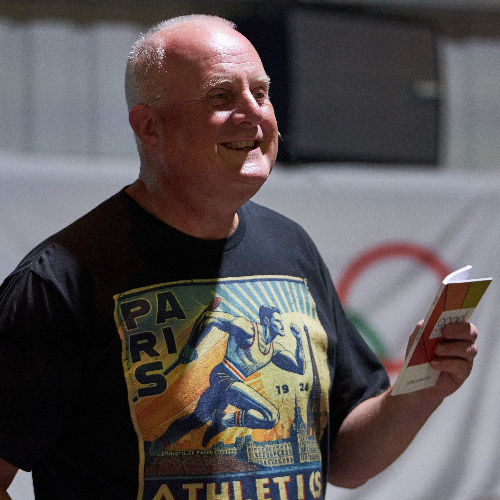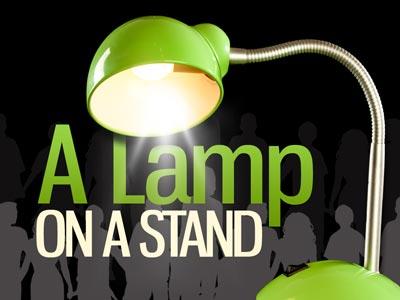-
Case Study 4 - Anna -The Female Evangelist Series
Contributed by Gordon Curley on Jan 27, 2025 (message contributor)
Summary: Case Study 4: Anna: The Female Evangelist. Luke chapter 2 verses 36-38 - sermon by Gordon Curley (PowerPoint slides to accompany this talk are available on request – email: gcurley@gcurley.info)
SERMON OUTLINE:
Insight #1. Prophetess (vs 36a).
Insight #2. Daughter (vs 36b)
Insight #3. Widow (vs 36c-37).
Insight #4. Witness (vs 38).
SERMON BODY:
Ill:
• When you plant a Chinese bamboo tree,
• You will need to water it, nurture it, and fertilize it every day.
• But nothing will happen in the first year.
• You do the same thing the second year, and still nothing happens.
• You do the same thing for the third year, and still nothing happens.
• You do the same thing for the fourth year, and still nothing happens.
• That’s right, you see no results for 4 long years!
• You will see no outward results, no evidence of progress.
• But then, what happens on the fifth year is just awesome.
• One morning you wake up and see a small bamboo sprig,
• Then the next day an even bigger one and in 5 weeks it has grown up to 90ft!
• TRANSITION:
• You could say it is only outwardly fruitful at the end of its life,
• Although lots of things have been taken shape unseen.
• It is the end and not the beginning that you notice!
• The story of Anna is like that Bamoo plant.
• Anna’s story is brief,
• In fact, this is her only mention in the Bible (just 4 verses).
• But her story packs a punch!
• I have noted 5 characteristics that make her special,
• The last characteristic that we will look at is found in verse 38b.
• “and spoke about the child to all who were looking forward to the redemption of Jerusalem.”
The Living Bible paraphrase it:
“she also began thanking God and telling everyone in Jerusalem who had been awaiting the coming of the Saviour that the Messiah had finally arrived.”
• Let’s look at Anna,
• And see what we can learn.
Key factors of Anna in the Bible:
Insight #1. Gifted Prophetess (vs 36a).
• “There was also a prophet, Anna”.
• Anna is identified as a prophetess,
• That means she had a special gift of declaring and interpreting God’s message.
Anna is one of four other female prophets named in the Old Testament.
• Question: Do you know who they are?
• Answer: They are…
• Miriam (Exodus chapter 15 verse 20),
• Deborah (Judges chapter 4 verse 4),
• Huldah (2 Kings chapter 22 verses 14-20),
• Noadiah (Nehemiah chapter 6 verse 14),
• And we also have an unnamed prophetess woman in,
• The book of Isaiah (chapter 8 verse 3).
• Question: which one of these was a false prophetess?
• Answer: Noadiah (Nehemiah chapter 6 verses 12-14)
• In the New Testament we also have the four daughters of Philip,
• (Acts chapter 21 verses 8-9).
Note:
• In the Old Testament,
• Prophetic ministry is not one dimensional,
• By that I mean they were not all the same in their ministry.
• I think there are at least 8 different types of prophets in the Old Testament.
• We often think of prophets foretelling.
• (that is predicting what would happen in the future).
• But often involved forth-telling,
• (that is making clear to the people what God had said about sin & judgement).
Note:
• Bible scholars do not all agree on exactly what this title means.
• Because for 400 years between the time of the Old and New Testament,
• There was no prophetic word from God.
• So instead of foretelling (new revelation),
• Maybe she forth-told the Word of God.
• Interpreted the Scriptures to make clear what was being said.
A prophet/prophetess’s primary function was representing God to the people,
• Like an ambassador relaying God’s Word.
• The prophet or prophetess was God’s mouthpiece.
• The Biblical prophets weren’t sharing their personal opinions,
• But divine revelation given to them by God.
• Anna’s ability to convey God’s message,
• Would have been highly respected and valued among the people.
ill:
• Question: Anyone recognise who is in this photograph?
• Answer: King George V:
• A bit of trivia.
• It was King George V who made the first royal Christmas Day broadcast.
• On 25 December 1932.
• As he would write in his diary:
• “At 3:35, I broadcasted a short message of 251 words to the whole Empire.”
• Actually, the broadcast was at 3:50pm as the clocks at Sandringham,
• (where the broadcast took place).
• Were set thirty minutes faster than normal time to maximise daylight.
Back to my original story:
• King George V was to give the opening address at a special disarmament conference,
• The speech was to be relayed by radio to the U.S.A.
• As the broadcast was about to begin, a cable broke in the New York radio station,

 Sermon Central
Sermon Central



